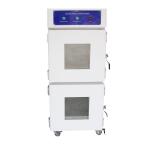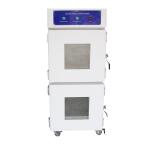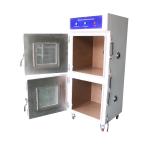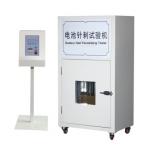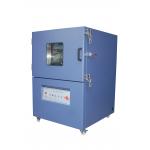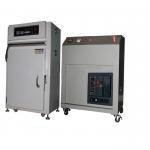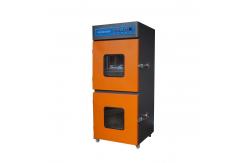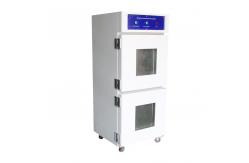In the fast-paced world of consumer electronics, where our
smartphones, laptops, tablets, and other portable devices have
become an integral part of our daily lives, the safety and
reliability of the batteries powering these gadgets are of
paramount importance. The Safety Battery Explosion-proof Test
Machine for Consumer Electronics Battery Testing is a cutting-edge
solution designed to ensure that the batteries used in these
devices meet the highest safety standards. This specialized test machine is dedicated to evaluating the safety
and performance of consumer electronics batteries under various
conditions. It serves battery manufacturers, consumer electronics
companies, and quality control laboratories. The primary objective
is to identify any potential risks of explosion, overheating, or
other safety hazards that could occur during the normal use or even
in extreme circumstances. By subjecting the batteries to a series
of rigorous tests, manufacturers can gain valuable insights into
the battery's behavior and make necessary improvements to enhance
their safety and quality. - Robust and Compact Design for Consumer Electronics Batteries
- The machine is constructed with a sturdy yet space-efficient
framework, usually made of high-strength steel. Its compact size
makes it suitable for laboratory settings where space may be
limited. The exterior is designed to be explosion-proof, with a
special enclosure that can withstand the force of a potential
battery explosion. The interior chamber is lined with a
heat-resistant and non-conductive material to protect the machine's
components and ensure accurate test results. The door of the
chamber is engineered with a reliable locking mechanism and a
gasket that provides an airtight seal. It also features a small
viewing window, made of tempered glass, allowing operators to
monitor the testing process.
- Precision Testing Mechanisms
- Overcharge and Overdischarge Testing: The machine can precisely
control the charging and discharging currents and voltages. It can
simulate overcharge conditions by applying a higher voltage than
the battery's rated capacity and monitor the battery's response.
Similarly, it can perform overdischarge tests to see how the
battery behaves when its voltage is depleted below the recommended
level. This helps in identifying potential issues such as thermal
runaway or damage to the battery electrodes.
- Short Circuit Testing: It is equipped with a mechanism to create a
short circuit across the battery terminals. The short circuit
current and duration can be adjusted, allowing for a detailed
analysis of the battery's reaction. This is crucial as short
circuits are one of the main causes of battery explosions in
consumer electronics.
- Temperature and Pressure Monitoring: The machine has temperature
sensors that can measure the battery's surface and internal
temperature during the tests. Pressure sensors are also installed
to detect any abnormal pressure build-up within the battery, which
could be an indication of a potential explosion. These sensors
provide real-time data that is recorded and analyzed to understand
the battery's thermal and mechanical stability.
- Advanced Data Acquisition and Analysis System
- The test machine is connected to a sophisticated data acquisition
system. It records all the parameters such as voltage, current,
temperature, and pressure during the tests. The data is then
analyzed using specialized software that can generate detailed
reports and graphs. This allows for a comprehensive understanding
of the battery's performance and any potential safety issues. The
system can also be configured to set thresholds for different
parameters, and if these thresholds are exceeded, it can trigger
alarms or automatically stop the test.
|
